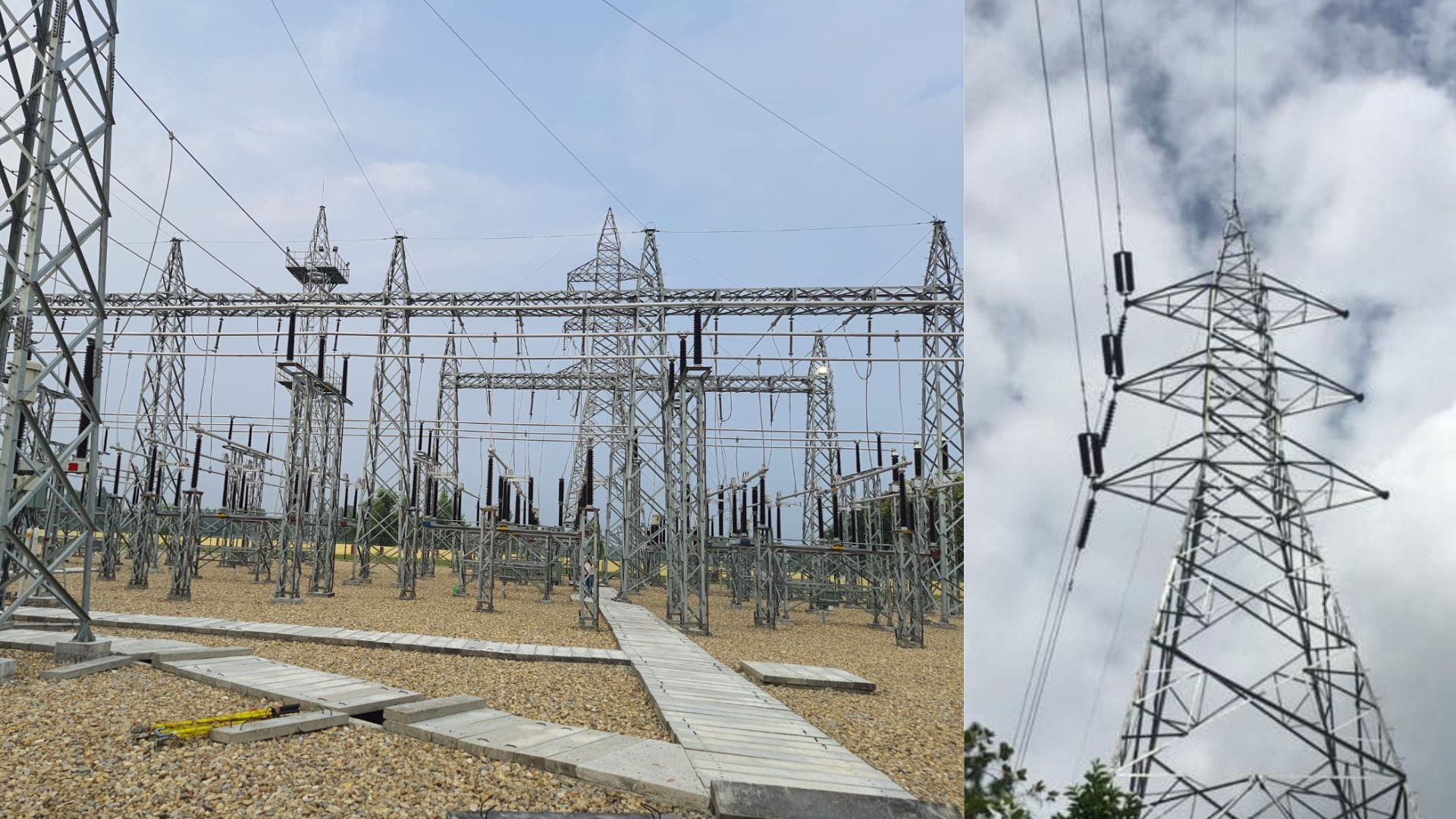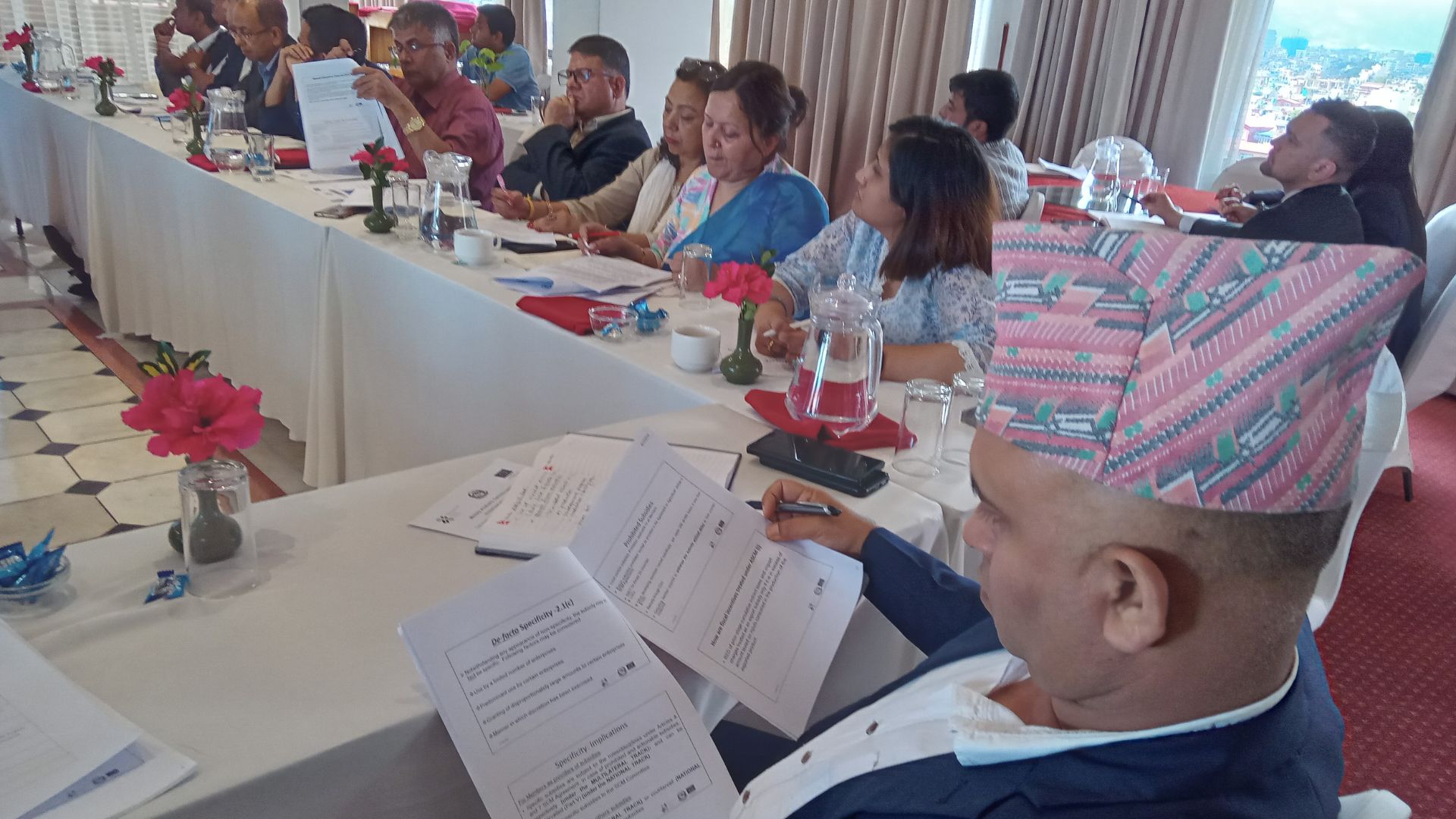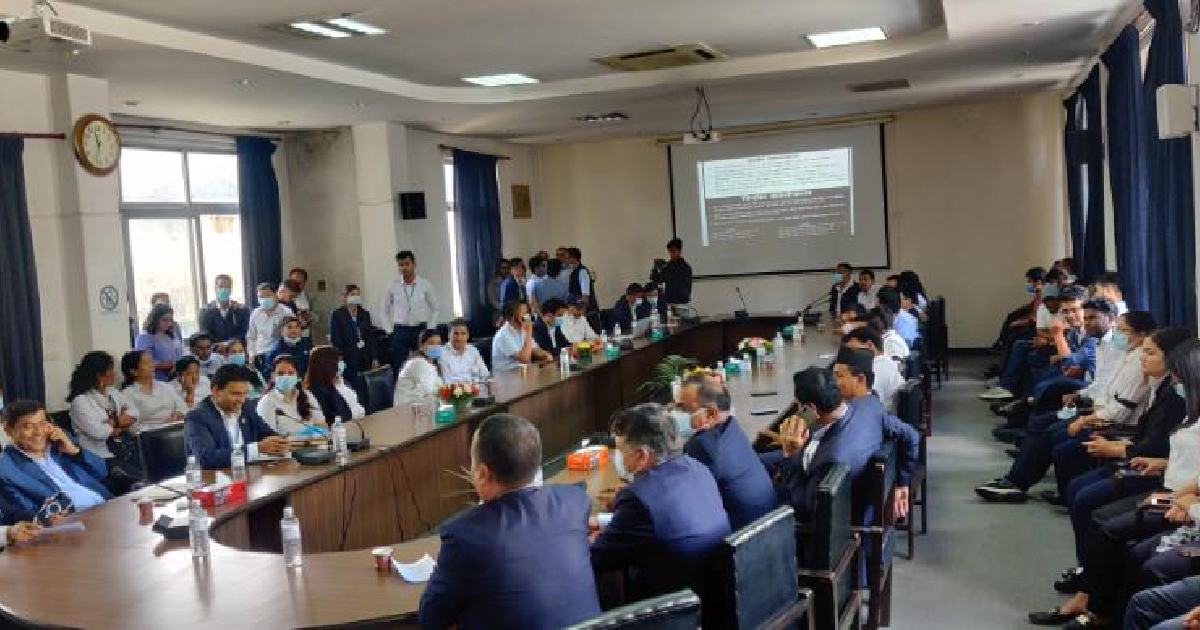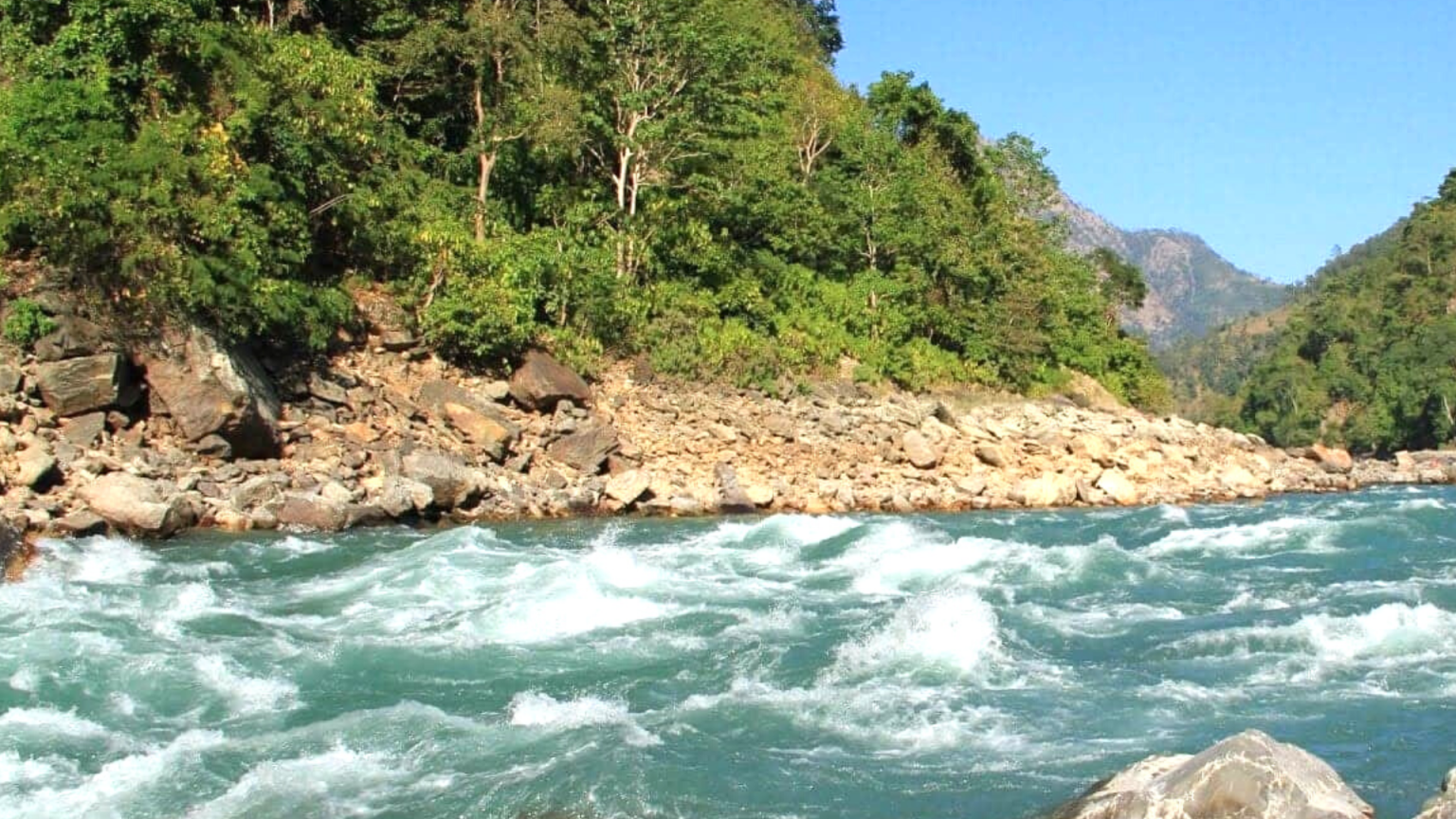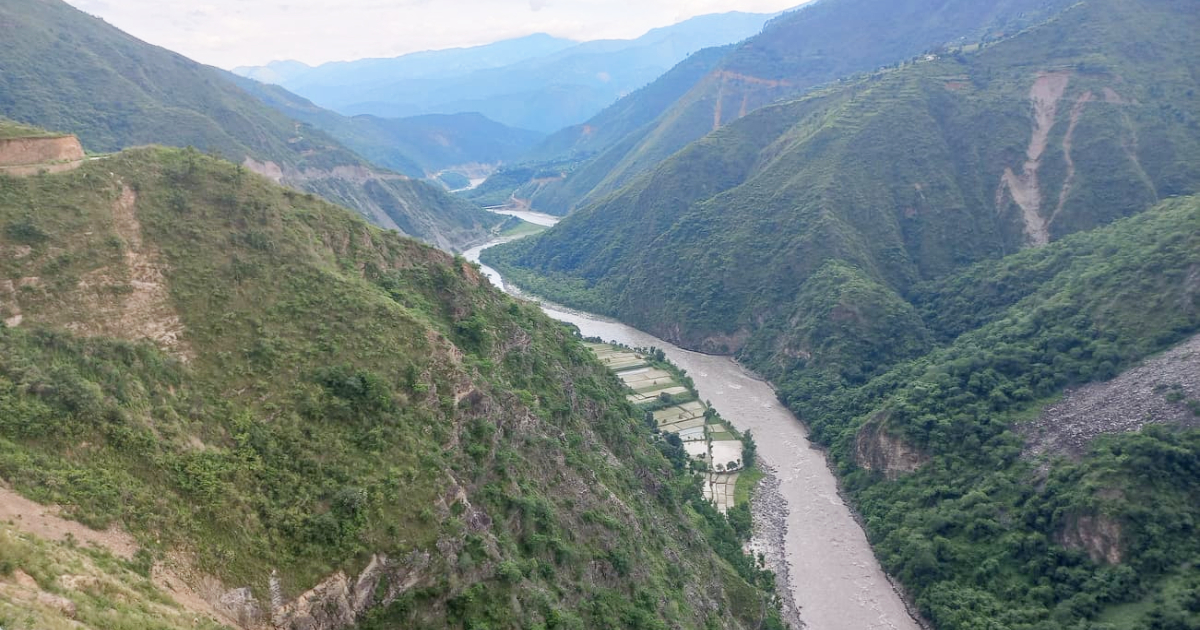

KATHMANDU: Recently Bangladesh Ambassador to Nepal Salahuddin Noman Chaudhary visited Lubhughat in Sunapati Rural Municipality of Ramechhap, the dam area of the 683 MW Sunkosi-3 Reservoir Hydropower Project. Along with him, Director General of the Department of Electricity Development Sanjeev Dev, Deputy Director General Sanjay Dhungel, Secretary of Ministry of Energy, Water Resources and Irrigation Chiranjeevi Chat out, Executive Director of Nepal Electricity Authority Kulman Ghising, Deputy Executive Director Pradeep Thicke, Director Praval Adhikari, among others reached the site.
Hundreds of local residents welcomed the ambassador’s team with garlands and bouquets. The team visited the site to inspect the proposed project being jointly built by the Electricity Authority and the Power Development Board of Bangladesh. The crowd of local people to welcome the team shows the local enthusiasm and their positive attitude towards the project.
Even now, many hydropower projects and Transmission Lines (TL) in Nepal are obstructed by local residents. Because of this obstacle, hydropower and TL could not be built on time leading to huge financial losses to the developer company and revenue loss to the government. The government’s goal of generating hydropower has not been met. This has caused problems in bringing electricity to the country and providing quality electricity. Due to this, the import of fuel in the country is increasing. This is the reason why the country has to survive the energy crisis.
The positive sentiment and support shown by the local residents towards the Sunkoshi 3rd hydropower project have given more enthusiasm for the construction of the project.
Regular obstacles and delays in the hydropower projects have caused the country’s economy to contract. In such a situation, the positive sentiment and support shown by the locals towards the Sunkoshi 3rd hydropower project have given the Ambassador of Bangladesh and his team more enthusiasm for the construction of the project. It is certain that this will send a positive message to Bangladesh for the construction of the project.
Political commitment
The commitment made by the local political parties for the construction of the project was also important in the program organized during the ambassador’s project observation. Politburo member of CPN (Maoist Center) Yuvraj Chaunlagai expressed commitment to extend all-out support from his party to develop the project as a game-changer project. Mentioning that his party has promised to build the Sunkoshi-3 hydropower project in its election manifesto, Chaulagain said that there will be no opposition from any political parties in the process of project implementation.
Ramchandra Khadka, the former district president of Nepali Congress, Ramechhap, said that the development will not belong to any party stating that implementation of this huge project is a matter of pride for that area. A local CPN (UML) also pledged to leave no stone unturned for the successful implementation of the project.
The Ambassador appreciated the united voice and strong political commitment shown for the seamless implementation of the project.
The Chairman of Sunapati Rural Municipality, Dolokancha Tamang, said that the local government is ready to take any initiative and support for the construction of the project. He expressed commitment that the local body would also assist in acquiring the necessary land for the project.
The Ambassador appreciated the united voice and strong political commitment shown for the seamless implementation of the project. Strong commitment from political parties to the project’s success is crucial at a time when the process of compensation determination and land acquisition is a bone of contention leading to time and cost overruns in most of the projects in Nepal.
In the program, the Executive Director of Electricity Authority Ghising said that the Sunkoshi-3 hydropower project should be promoted as the confluence of three rivers (junction)- symbolically Nepal, India, and Bangladesh. As Bangladesh wants to export electricity from Nepal and it needs to use India’s TL, it needs to be developed as a three-way system. The government should initiate proper diplomatic talks with India and Bangladesh, and Bangladesh should also hold diplomatic talks with India for trading power generated from this project.
Indispensable for the development of five districts
If the Sunkoshi-3 hydropower project is constructed, it is certain that it will directly benefit Kavre, Ramechhap, Sindhupalchok, Dolakha, and Sindhuli districts. It contributes greatly to the economic and social development of these areas. Not only electricity will be produced from Sunkoshi-3, but it will also contribute to the expansion of irrigation, drinking water supplies, and promotion of tourism in project host districts. Sunkoshi river, which flows along the hills on both sides, has already become a popular destination for tourism and farm activities including rafting and fisheries. The project is going to make significant economic contributions through royalty, employment, and local development. The affected area gets an annual royalty of Rs 500 million from the project, which is going to spend around Rs 1 billion on local development.
Proximity to capital
When the Sunkoshi-3 hydroelectric project is built, a reservoir will stretch 45 km from Luvughat making a big contribution to the overall economic development of the local area. Lubughat is 95 km from Kathmandu while Dolalghat is 40 km which is a matter of not more than one hour drive.
Resettlement and rehabilitation
Around 3331 hectares of land including 655 hectares of forest area are required for the project, which requires resettlement and rehabilitation of 11,773 people of 1,565 households.
Developing such big projects, rehabilitation, and resettlement of affected households following internationally accepted norms and standards. For this, it is necessary for everyone to be aware and active. However, the cost for this is fixed in advance.
In line with international practice, the project should come up with a plan for the displaced people so that they can live a better quality of life than what they are living now. The Asian Development Bank’s Safeguard Policy Standards and Performance Standards of International Finance Corporation (IFC) are commonly used standards being followed by big infrastructure projects in the process of resettlement and rehabilitation of affected people.
A total of Rs 57billion is estimated for land acquisition, resettlement, and restoration purposes for the Sunkoshi-3 project. The sunkoshi-3 project was first identified by Japan Cooperation Agency (JICA) in 1985. According to the project head Subas Thapalia, the study of the project started in 2074 and is currently being studied in detail. The study has shown that 2356.27-gigawatt hours of electricity will be generated from the project.


